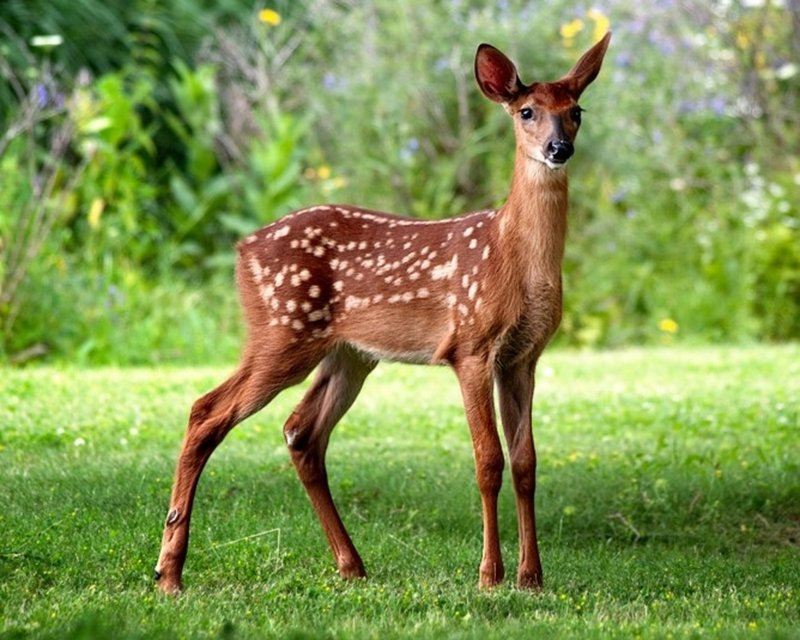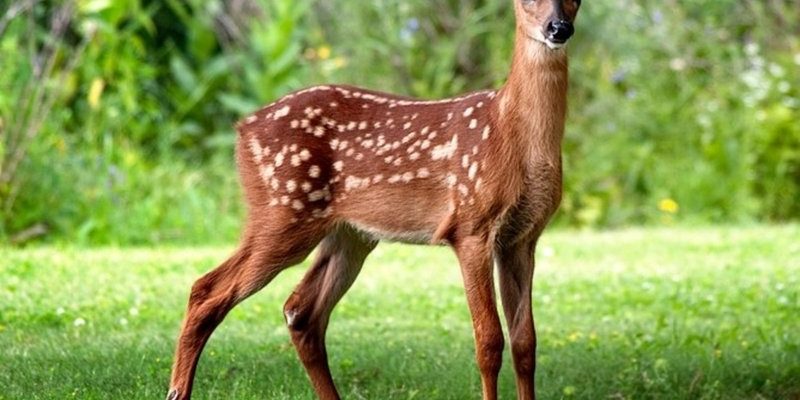
So, why do these myths persist? Part of the reason is the way we view deer in popular culture. From Bambi to hunting lore, the stories told about these animals can blur the lines between fact and fiction. Let’s dive into some of the most common myths and set the record straight.
Myth 1: White-Tailed Deer Are Always Gentle and Timid
It’s easy to think of white-tailed deer as shy creatures that would rather run away than confront anything. While they do tend to flee from danger, this doesn’t mean they’re always gentle. White-tailed deer can be surprisingly aggressive, especially during the rutting season in the fall when males are competing for mates.
Imagine a peaceful park turning into a scene from an action movie during mating season. Bucks can become territorial and protective, sometimes clashing with one another or even charging at perceived threats. It’s important to maintain a safe distance, especially during this time of year.
Furthermore, if cornered or feeling threatened, a deer can defend itself with strong kicks. The gracefulness in their movements can be deceiving—these animals are far from helpless.
Myth 2: All Deer Have Antlers
You might think that every white-tailed deer sports a set of antlers, but that’s not the case. Only male deer, known as bucks, grow antlers. Female deer, or does, do not develop antlers.
Antlers are a sign of maturity in bucks and can start to grow as early as six months of age. They grow larger and more complex as the buck ages, but if you encountered a herd of deer, the doe would be unadorned. It’s easy to overlook this detail when you see a spectacular buck in the wild, but female deer are just as integral to the ecosystem.
This difference also plays a role in their behavior. While bucks can show aggressive actions when in rut, does are typically the more nurturing and protective figures, especially when they have fawns.
Myth 3: White-Tailed Deer Are Strictly Herbivores
While it’s true that white-tailed deer primarily feed on vegetation, it’s a misconception to think they won’t eat anything else. Here’s the thing: these animals are opportunistic feeders. If they come across an easy source of food, they won’t hesitate to snack on it.
You might find them munching on:
- Fruits and nuts
- Grasses and leaves
- Even tree bark in harsher winters
Deer have been known to eat anything from apples and acorns to the occasional garden flower. So, if you’re planting a new garden, you might want to check for deer-proof options first.
Myth 4: White-Tailed Deer Are a Nuisance Everywhere
Sure, deer can cause problems, especially for farmers or gardeners, but labeling them as a “nuisance” overlooks their ecological significance. These creatures play a crucial role in their ecosystems.
Deer help maintain plant diversity by grazing. In a balanced environment, they can prevent certain plant species from dominating an area, allowing other plants to thrive. Additionally, their population impacts other wildlife, providing food for predators like coyotes and mountain lions.
Instead of viewing them solely as pests, it might be more accurate to see them as a vital part of their habitats. When the deer population is managed responsibly, they contribute to a healthy ecosystem.
Myth 5: White-Tailed Deer Can’t See Well
You might have heard that deer have poor eyesight. In reality, white-tailed deer can see quite well! Their vision is adapted for detecting motion, making them excellent at spotting potential threats.
They have a wide field of view—about 310 degrees—allowing them to notice things in their environment that you might miss. However, their color perception is limited compared to humans. They can see some colors, but not as vividly as we do, which might be why some people think they can’t see well.
So, the next time you think about sneaking up on a deer, remember: they might see you before you even get close!
Myth 6: White-Tailed Deer Only Live in Forests
Many people associate white-tailed deer with dense forests, but these animals are remarkably adaptable. They can thrive in a variety of habitats, including:
- Grasslands
- Swamps
- Urban areas
Deer have even established populations in suburban neighborhoods, often foraging for food in backyards. This adaptability speaks to their survival skills and resourcefulness.
So, if you live near nature, don’t be surprised if a deer shows up in your yard. They’ve learned to navigate human spaces just as effectively as they do their natural habitats.
Myth 7: White-Tailed Deer Are Not in Danger
Many folks believe that white-tailed deer are thriving and don’t face any threats. While some populations are indeed robust, others can be vulnerable to various dangers, including habitat loss and vehicle collisions.
Urban development encroaches on their natural habitats, leading to decreased food sources and safe places to raise fawns. Additionally, during certain times of the year, deer are more likely to venture near roads, which increases their chances of collision with vehicles.
Conservation efforts play a critical role in managing their populations and ensuring that they thrive in their natural environments. Knowledge about these animals is vital for protecting them and their habitats.
The white-tailed deer is a fascinating creature with a mix of grace and strength. While myths and misconceptions abound, understanding the reality of their lives can help us appreciate them more. They’re not just gentle grazers; they’re crucial players in our ecosystems, adapting to various challenges and environments.
So, whether you’re hoping to spot one in the wild or just curious about these creatures, remember that there’s more to white-tailed deer than meets the eye. By debunking these myths, we can foster a better understanding and respect for these remarkable animals.

